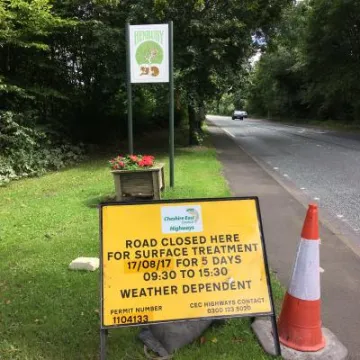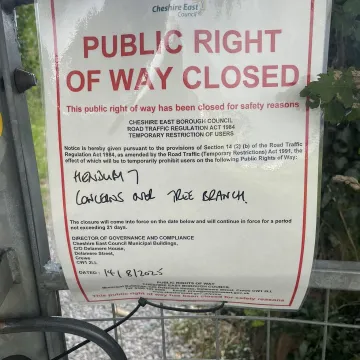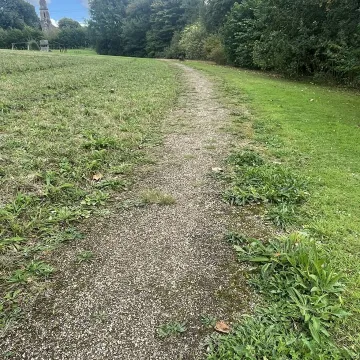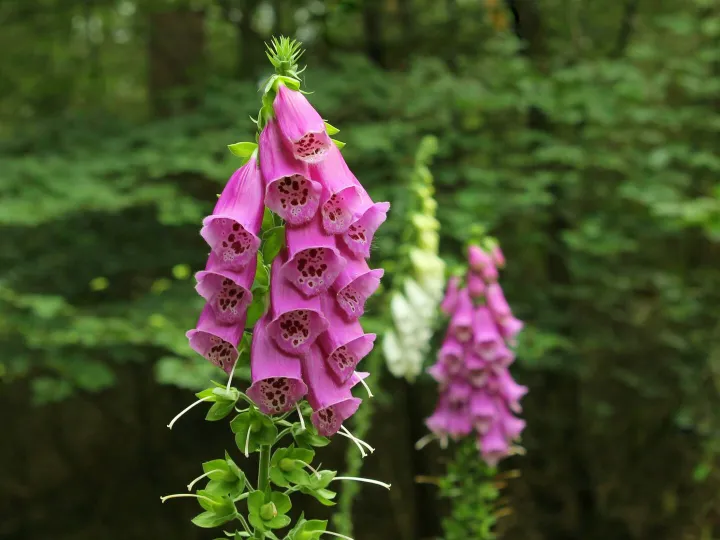







Horrid and Dot the Dog have enjoyed a wonderful month in Henbury
Occasional Notes from a Dog Walker
May 2025
The month began as April had ended – hot and sunny. The Goyt Valley wildfire reignited briefly, but not as spectacularly as before.
Locally, the may blossom dominated the hedges and the scent was intoxicating. Even when the weather turned cooler and windier for the Blank Holiday the scent remained overwhelming. The field over towards the watertower was cut for silage but I feared the ploughing and harrowing of the other field may have destroyed a lapwing nest.
Our magpie nest was now completely hidden by the dense foliage in the whitebeam, but the activity suggested a brood was being fed. A scattering of feathers around the bird feeders hinted at a visit from the sparrowhawk.
Brimstone and white butterflies came and went through the garden but despite the proliferation of flying insects in the sunshine no swallows or swifts appeared. S did spot some bats as the dusk darkened however.
I hadn't realised how colourful hawthorn (may) flowers are – they just look white at first glance but smell headily wonderful. However I noticed that as the flower buds begin to open the stamens are bright red – only when the flowers are fully open do the stamens turn greyish-green, presumably by then pollen-laden.
The hot dry weather continued. Nettles along the track between Andertons Lane and the cottages began to wilt (but didn't lose their sting!). Amorous couples of butterflies (small whites and I think green-veined whites) flirted over the fields and a pair of swans briefly visited the (once) big flood. The field with the pylon had been drilled with maize and despite the dry weather the crop had germinated and began to grow.
In the garden self-sowings appeared again – purple woodsorrel and yellow woodsorrel. Seedlings potted up, purely out of interest. The tadpoles sunbathed ecstatically.
As time went on, still very hot, sunny and dry, even the brambles in the hedges began to wilt. Courting pairs of butterflies continued to flit about in the garden and over the fields – particularly small whites.
At last the rain came – sort of. It didn't make much difference. Even so, the maize grew on, but old maps show springs at the top and bottom of that field, so perhaps they have their own water supply.
Juvenile birds appeared. A young robin, without yet its red breast, explored the bird table (buggy suet nibbles were I think the attraction). A young goldfinch was unsure what to do on one of the feeders and fluttered helplessly until an adult (presumably parent) arrived and gave a demonstration.
Over the fields the grasses came into flower, timothy, cock's foot and others as the stems grew to nearly knee-height. The first foxgloves began to show in the hedgerows.
After a few days of welcome (but insufficient) rain the maize in its field took off and started to grow at a phenomenal rate.
Meanwhile the woodpecker came to visit the feeders. One of the squirrels devised a method to part-dismantle the (expensive) "squirrel proof" feeders, but didn't get very far.
The jay became a regular visitor to the bird table and nut feeder. It's an aggressive beast, quite happy to take on a group of crows and/or jackdaws and scatter them from the table when it wants to feed, or repulse them if it is already there. It is a very handsome bird, especially when its crest is up in fighting mode.
As ever
Horrid of Henbury


